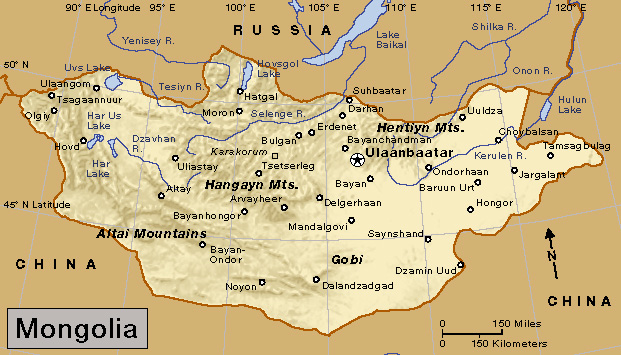Ulaanbaatar << `oo` lahn BAH tawr >> (pop. 1,596,535), also spelled Ulan Bator, is the capital and largest city of Mongolia. It is also Mongolia’s center of culture and industry. The city lies in the northeastern part of the country.

Large government buildings line Ulaanbaatar’s central square. The city has a number of universities, a national theater, and several museums. Its manufactured products include furniture, cast iron, paper, pharmaceutical products, soap, and textiles. Meat packing is also an important industry in the city.
In 1639, a Lamaist monastery was built on the site of what is now Ulaanbaatar. Lamaism is a form of Buddhism. A settlement grew up around the monastery, and it became an important trade center. The city was called Urga until 1924, when Mongolia became an independent republic. It was then named Ulaanbaatar by Suhbaatar, the leader of the fight for independence (see Mongolia (History)).
